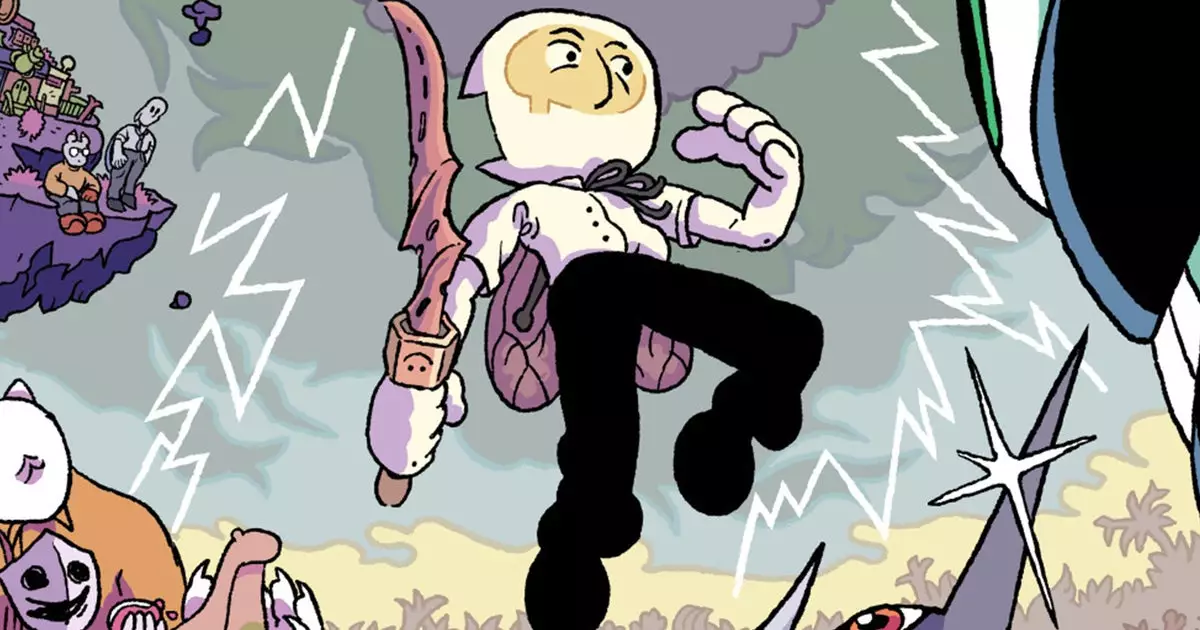In the crowded landscape of indie RPGs, few games manage to carve out a truly distinctive identity by blending disparate elements in a seamless way. Blanksword dares to challenge conventions, intertwining the roguelike format with a narrative-driven experience rooted in surreal and abstract storytelling. At its core, the game narrates the journey of Blank, an angel who is not only physically damaged but also burdened with amnesia. This premise alone sparks curiosity, but what elevates Blanksword beyond typical genre fare is its bold approach to storytelling—melding cryptic lore, psychological intrigue, and absurd humor into an immersive tapestry. The game invites players into a fractured world governed by a divine figure: “Literally God.” The intriguing premise of exploring fragmented islands while unraveling your forgotten past pushes players to think beyond traditional RPG boundaries, pondering themes of identity, memory, and divine authority.
What sets Blanksword apart isn’t merely its story, but its philosophical depth. The protagonist’s loss of memory symbolizes a universal quest for self-understanding amidst chaos. As players navigate this bizarre universe, they’re encouraged to piece together clues and confront existential questions—making the narrative a compelling centerpiece, not just an afterthought. This level of storytelling, reminiscent of avant-garde titles like OFF or Hylics, hints at a game that doesn’t settle for surface-level engagement but strives to challenge and provoke thought. The game’s narrative sophistication and experimental art style suggest an ambitious vision that values storytelling as much as gameplay mechanics.
Innovative Mechanics with a Surprising Depth
While the premise and story intrigue, what truly captivates is how Blanksword marries this narrative ambition with inventive gameplay mechanics. The turn-based combat system draws some inspiration from classic RPGs but introduces layers of complexity through its expansive move pool—”hundreds” of abilities that can be acquired and customized across runs. This mechanic offers a dynamic gameplay loop, encouraging experimentation and strategic planning. Each playthrough generates a new combination of moves, keeping the experience fresh and challenging, hallmarks of a deft roguelike execution.
What makes Blanksword particularly compelling is its innovative use of the protagonist’s condition—namely, that Blank has no brain, or rather, an incomplete one. The mechanic of collecting “Angelic Brain Parts” that restore specific abilities transforms the game into a deeply personalized journey. Choosing which brain parts to equip determines how you interact with enemies, shopkeepers, or even the environment, offering a nuanced layer of customization that feels both meaningful and playful. It’s a clever reflection of the game’s themes: rebuilding oneself piece by piece, with every decision influencing your survival and understanding of your identity.
Additionally, the game’s art and aesthetics do more than just set a surreal tone—they serve as an extension of its mechanical and narrative complexity. The collaboration with Mortis Ghost for visual art infuses Blanksword with a whimsical yet eerie aura, enhancing the feeling that players are exploring a dreamlike world where logic and chaos coexist. This synergy between visuals, story, and mechanics suggests a masterful design philosophy that prioritizes immersion and emotional resonance.
Potential and Challenges on the Horizon
The game’s recent Kickstarter launch and the availability of a demo signal genuine confidence from the developers. While the game’s indie roots may give it the underdog charm, they also bring inevitable risks. The game’s ambitious scope—integrating complex mechanical systems, deep narrative layers, and unique art—raises questions about feasibility, pacing, and overall polish at launch. However, the fact that a demo is available offers a valuable glimpse into what the final product might deliver and hints that the developers are committed to quality.
Another point of concern is the timeline. With a tentative release set for 2027, players and fans might need patience, especially considering the scope involved. Despite this, the waiting could be worthwhile if the development process stays true to the game’s promising concept. The game’s positioning—aiming to attract fans of avant-garde RPGs with a penchant for experimental storytelling—places it in a niche but potentially lucrative market. Its potential to amass a dedicated following hinges on how well it balances innovation and execution.
Ultimately, Blanksword embodies the spirit of indie gaming—daring, unconventional, and hungry for creative expression. Its success depends not just on its mechanics or narrative, but on whether it can carve out a distinct voice that resonates with players seeking more than the standard RPG fare. If it delivers on its promise, it could serve as a beacon of how genre experimentation enriches the gaming landscape.

